Here at Customer Marketing Alliance, we've been doing a deep dive into customer marketing salaries and the factors impacting them. We wanted to explore how much of an impact other company factors had on the salary of customer marketing.
This article will consider factors like
- The most lucrative industries
- Growth stage
- Company revenue
- Employee headcount
- The size of customer marketing teams, and
- Company culture
Company factors
Most lucrative industries
Our results show that eCommerce had the highest average salary when compared to other industries in our data pool with an average salary of $133,333.
In second and third position, we had Advertising & Marketing ($126,562), and Software & Information ($125,915), with Computer & Networking being the industry with the lowest average salary for customer marketers ($87,500).
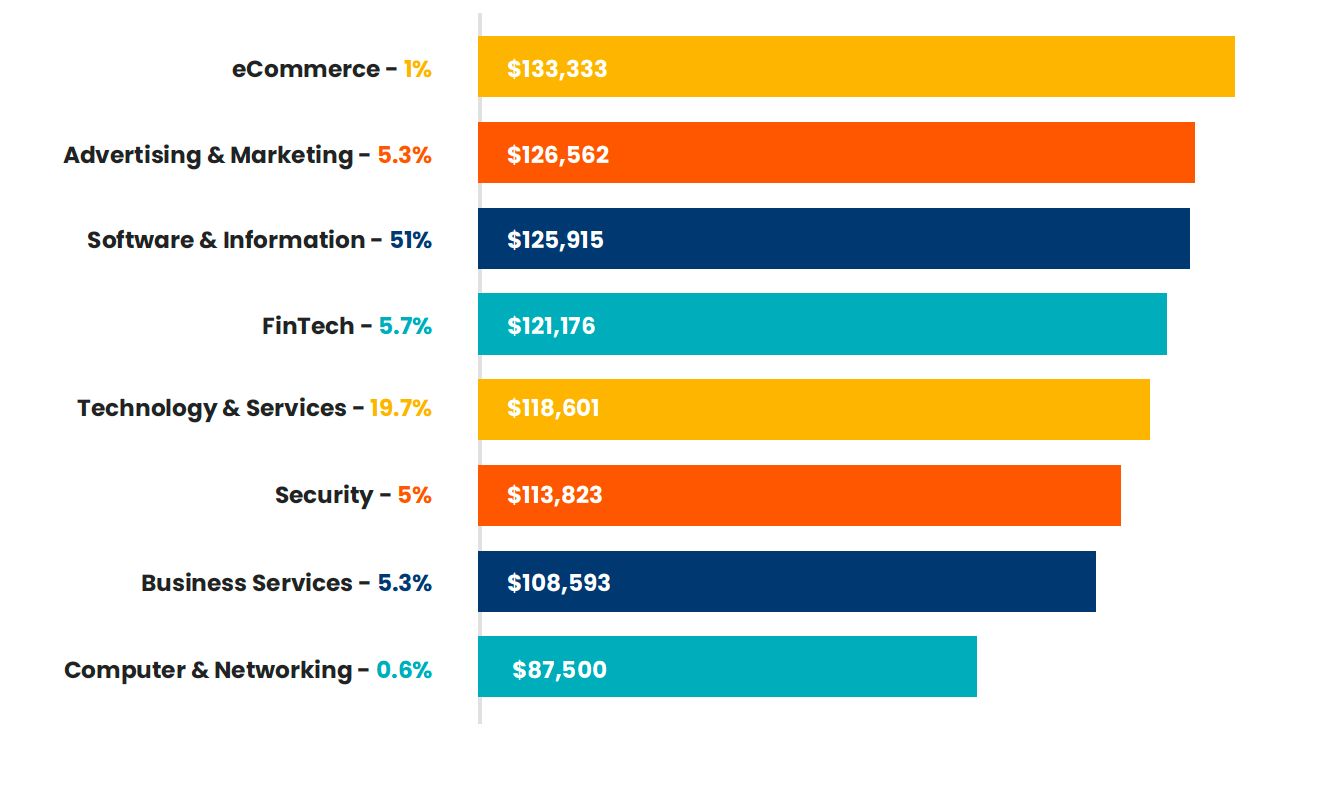
It’s important to consider that eCommerce and Computer & Networking make up the smallest percentages of our data pool, so it makes sense that these two make up the extremes of the average.
Taking this into consideration, Advertising & Marketing had the highest average of the larger data groups, at $126,562. This is $5,069 higher than the global average. This is unsurprising due to customer marketing being a marketing role.
It’s also unsurprising that Software & Technology Information ranked second highest in the larger data groups, at $125,915. B2B businesses and SaaS companies make up the majority of company types in our data collection.
In this type of business its vital to have a strong rapport with your existing customers, as the majority of customers will be those that use your product for a significant period of time. Customer loyalty, customer satisfaction, and customer retention play a large part in the success of these types of businesses in particular.
Psst, did you know that our Customer Marketing Alliance members get early and unrestricted access to all of our reports past, present and future?

Salary at different growth stages
From our results, we can see that the growth stage with the highest average salary is companies in the mid-growth stage, with an average salary of $122,500. This is followed up by Enterprise companies at $120,286 with the lowest salary average being from companies at the early post-product fit stage ($119,642).
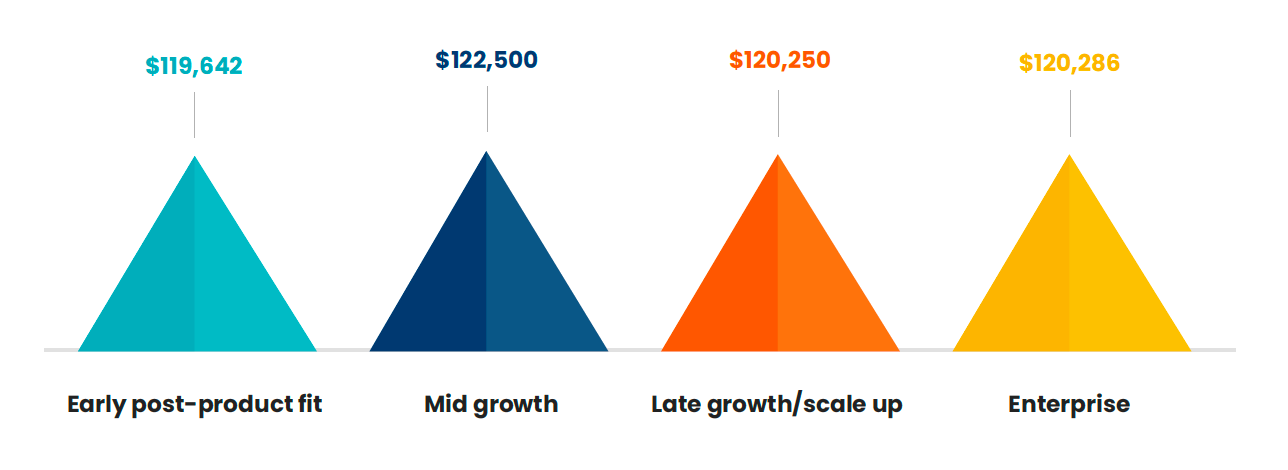
The common trend is for customer marketers to be introduced to the company structure during periods of heavy growth, where a larger customer base is being established.
This is shown in our data, with mid-growth companies offering the highest average salary, though in actual fact it’s those in late growth/scale up businesses that make up the largest percentage of our data.
When companies experience large amounts of growth, often the responsibilities on smaller teams increase exponentially prior to teams getting bigger in size. Perhaps the higher average salary for mid-growth companies reflects this added responsibility for those in these companies.
For enterprises, managing large customer groups, and keeping each segment happy is not easy. And for mid-growth companies, it’s vital for loyal customers to remain happy with the services while still allowing the company to change as it grows.
Note: Early pre-product fit stage was omitted due to it’s small data size, so as to not affect the integrity of the other data.
Salary by company revenue
Next, we’ll look at revenue. The assumption is that companies with higher revenue will be able to provide their customer marketers with a salary that reflects that growth.
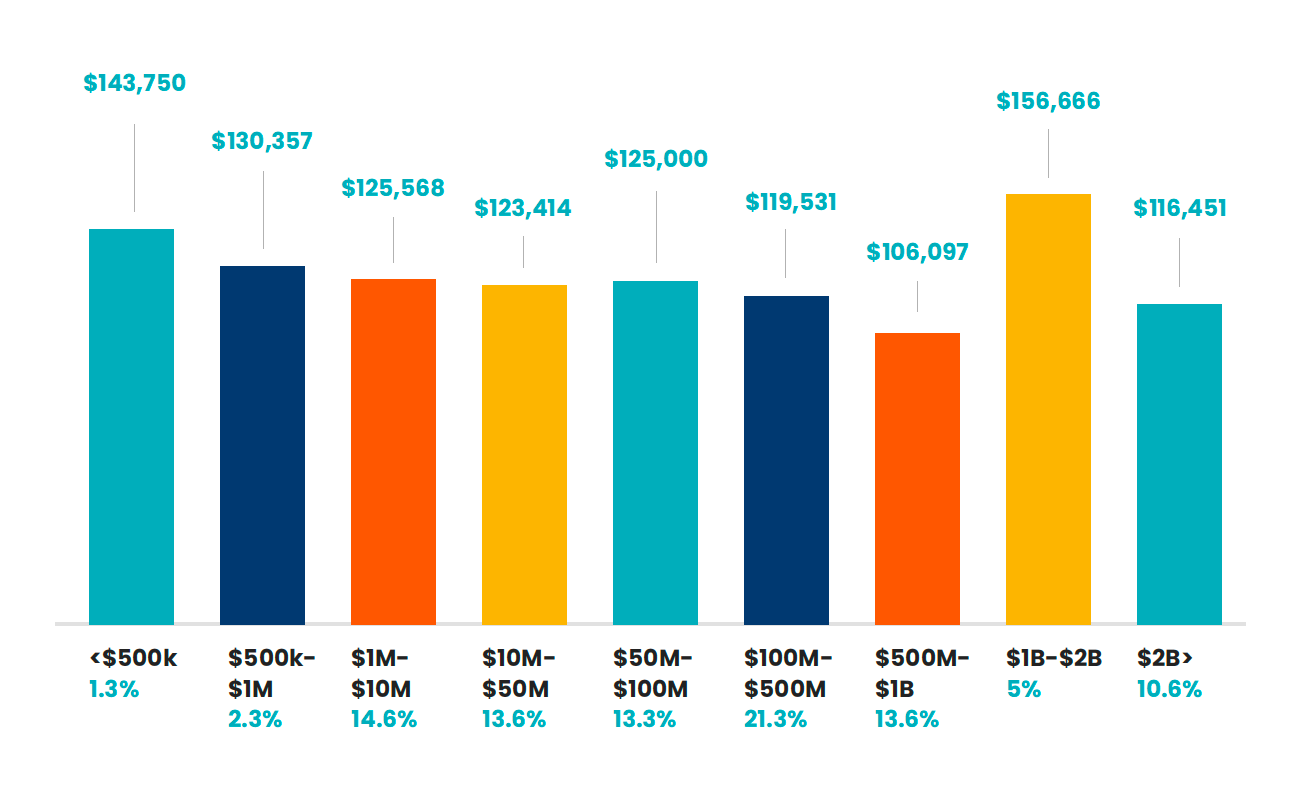
Note: 4.3% of our responders didn’t know their companies annual revenue
From our data, it seems that revenue has little to do with the base salary for customer marketers.
Though some of the ranges follow our hypothesis - particularly with the 1B-2B range having the highest average salary at $156,451 - others veer off the trend completely. This is most notable with the less than $500,000 range ranking second with a salary average of $143,750.
Bonuses by company revenue
When we explored how our participants felt about their bonuses, several customer marketers stated the desire for bonuses to be awarded based on personal achievements rather than other factors like company revenue.
It comes as no surprise then, that, although salaries didn’t fit with our hypothesis, bonuses did. The ranges with the highest average bonus were ‘more than 2B’ ($22,214) and 1-2B ($16,732).
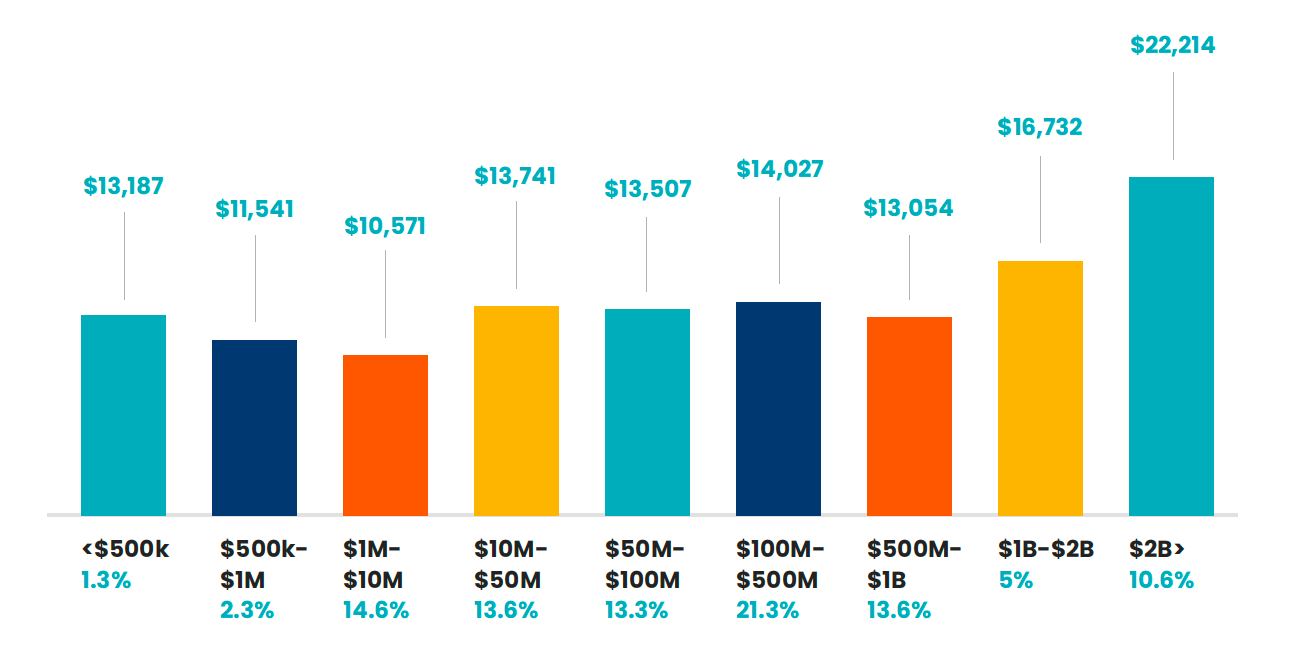
While it's good to see that bonuses are being rewarded as a reflection of company revenue, it seems that a lot is still left to be desired when it comes to bonus satisfaction for customer marketers.
With the desire expressed for higher bonuses, and for bonuses to be awarded on performance rather than revenue, perhaps we’ll see a more even spread of bonus averages in the upcoming years. You can read more about bonus satisfaction in part four of this report.
Salary by employee headcount
We’ve already seen that our survey responders come from a variety of companies at different stages of growth. We wanted to see how this reflected in the employee headcount, and how, if at all, this impacted salaries.
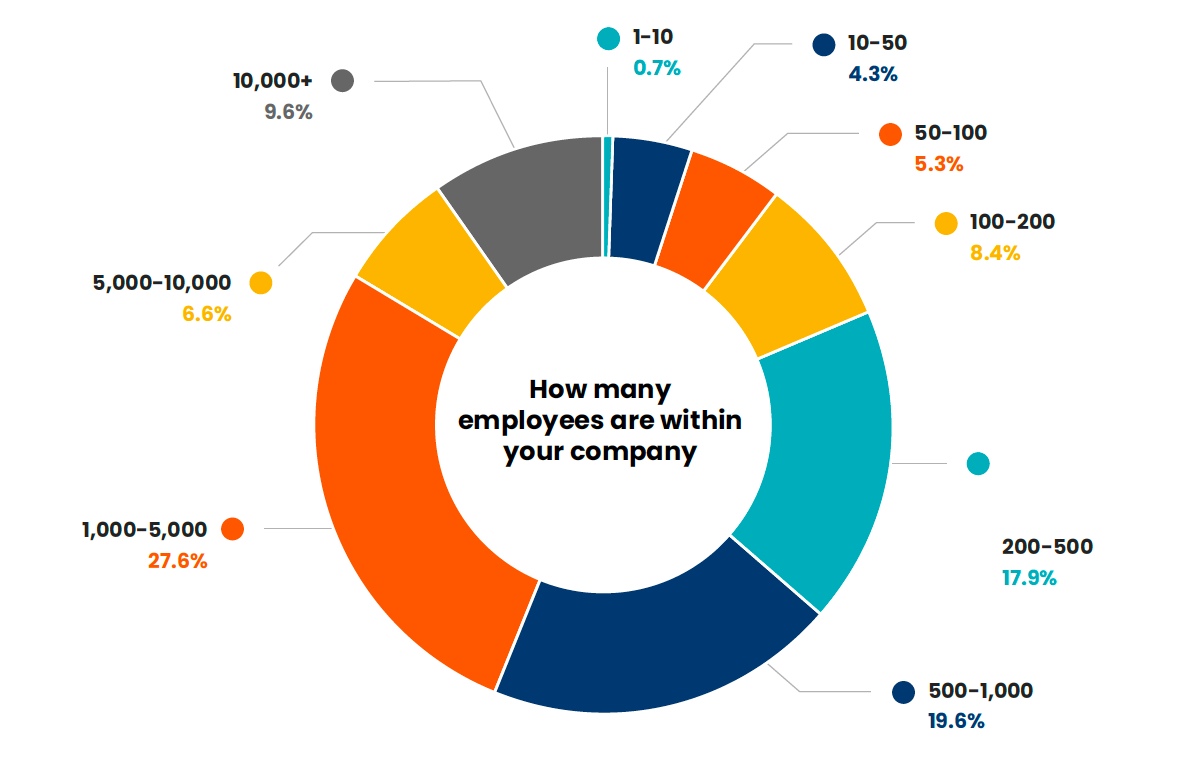
It seems that the majority of our survey responders (65.1%) come from companies with between 200-5,000 employees. Broken down, 27.6% come from companies with an employee headcount of between 1,000 to 5,000, 19.6% from 500-1,000, and 17.9% from 200-500.
0.7% come from companies with ten or fewer employees, making up the smallest percentile in our data group.
Average Salary
When the average salary is broken down by employee headcount, the results look like this:
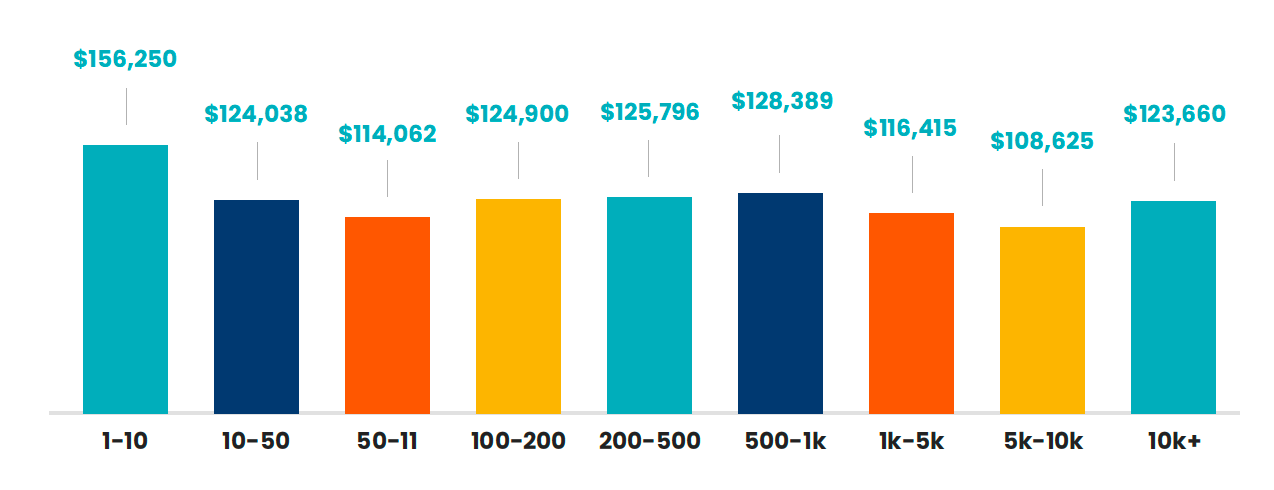
The group with the highest average salary was 1-10 with an average of $156,250. However, it’s important to note that this range only makes up 0.7% of our overall data pool. Delving in deeper, the range of this small percentage was quite large ($75,000-$200,000+). As a result this number is not really indicative of the whole picture.
The next highest numbers paint a more even spread, with the range of 500-1,000 which had an average of $128,625. The group with the lowest average salary was 5,000-10,000 at $108,625.
Looking at this data, there’s not a ton of correlation to find in this set, but it’s worth noting that companies with 1,000 employees or fewer have higher overall averages in salary than those with larger employee headcounts.
This is likely due to the level of workload and the number of employees available to distribute it between. We know that the majority of customer marketers work solo, and so take on a higher workload regardless of company size.
Customer marketing team size
Focusing on customer marketing teams specifically, our next question was whether the size of customer marketing teams affected salaries. Given that it’s most common for customer marketers to work in teams of one, how might this change what their base salary is?
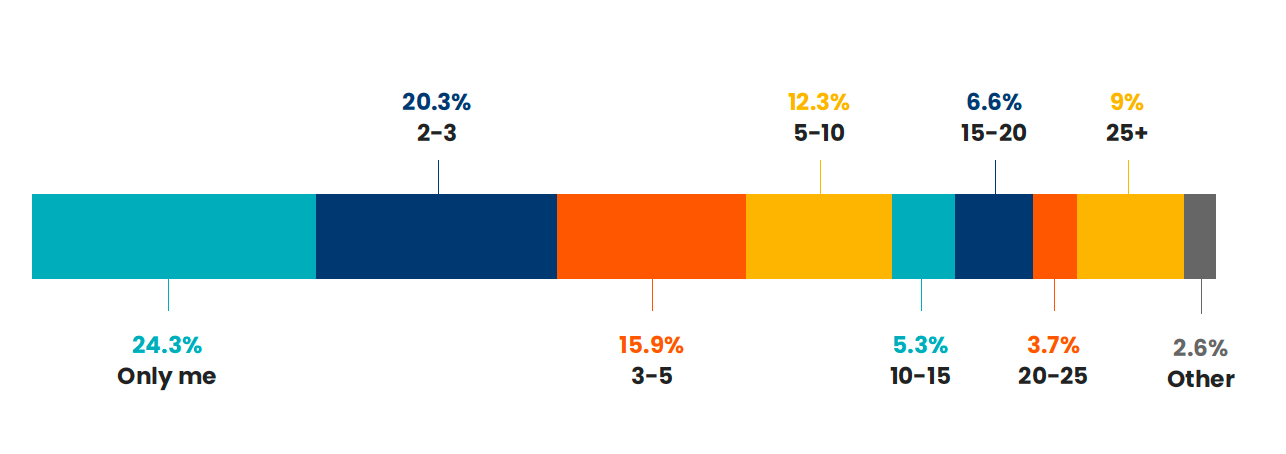
Note: Those that selected ‘Other’ worked in companies where there wasn’t a dedicated customer marketing team.
The majority of customer marketers in our data set work alone (24.3%). Following this group, the next highest team sizes represented were 2-3 (20.3%), 3-5 (15.9%), 5-10 (12.3%), and, as a slight outlier, teams of 25+ (9%).
Another common desire expressed among several of those in our data group was that they wanted a larger team, over things like bonuses. As the majority comes from teams of five or fewer (60.5%) this is not such a surprising request.
The work customer marketers do is vast, and many of their responsibilities are as equally vital as the next. With only one or two people to split these tasks between, this issue for customer marketers becomes more of a problem of resources than salary. It will be interesting to see how companies address this issue; whether this will be reflected by teams growing in size will remain to be seen.
Average salary
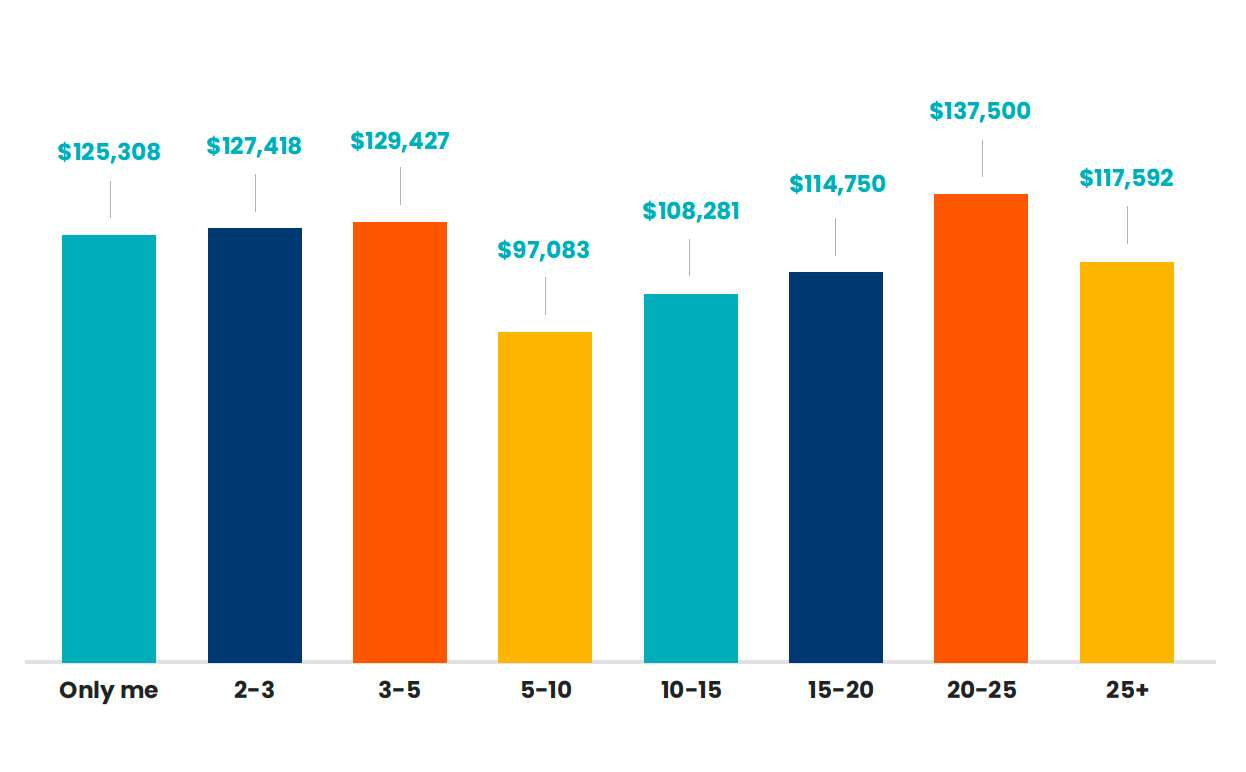
It seems that size of the team has less of a bearing on average salary, though it is important to note that three of the highest average salaries were held by those in teams of 5 or less, with the one outlier being teams of 20-25 with the highest average in our data set, $137,500.
Of the factors we’ve considered in this section, however, employee headcount seems to have the most impact before company revenue and growth stage. Though revenue had a noticeable impact on average bonuses, it seems that the smaller the customer marketing team, the higher the average salary.
Company culture
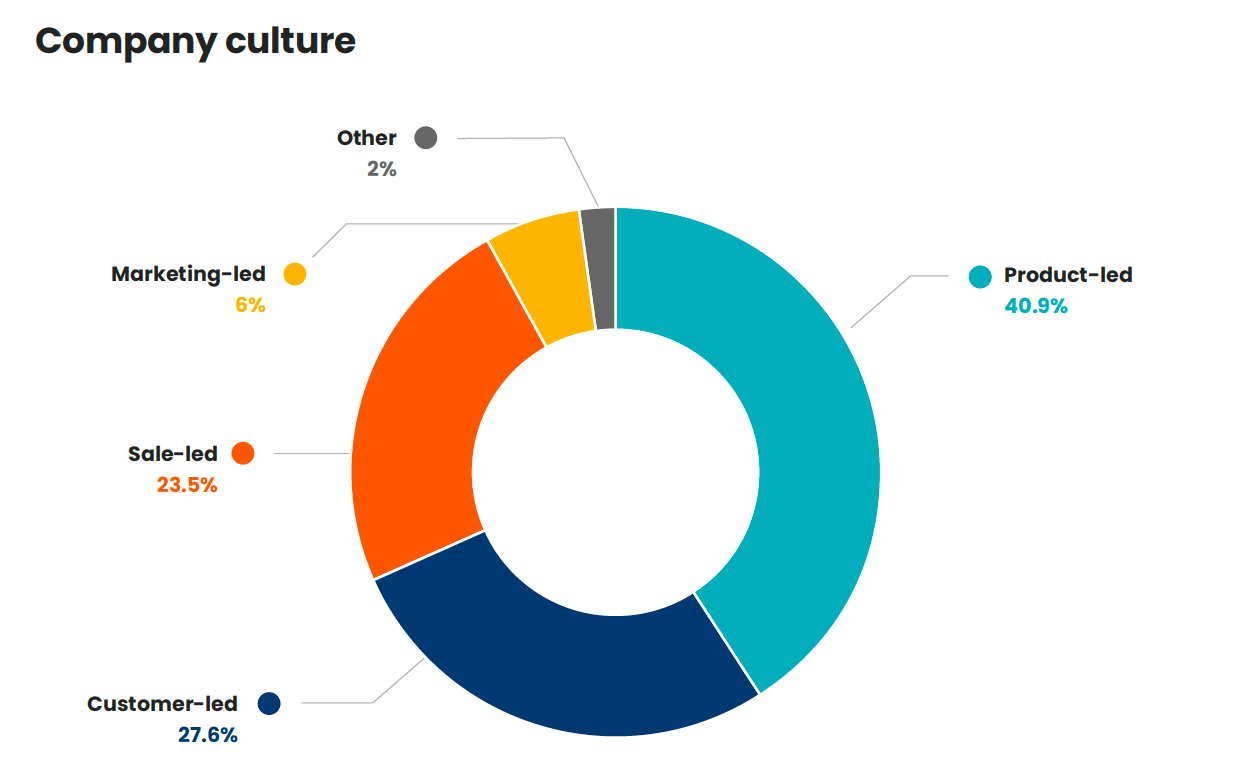
Note: Those that selected ‘Other’ described their companies as need-led, philanthropy-led, and employee-led.
Of the people we surveyed, most come from product-led companies (40.9%), with customer-led (27.6%) and sales-led (23.5%) cultures coming in second and third.
Though the assumption may be that customer-led cultures would be where customer marketing thrives, the reality is that there aren't that many companies that would ascribe themselves this label.
Rather, the presence of customer marketing teams in product-led and sales-led companies might show that customer marketing is leveraged to accommodate for this difference. While the company overall is not customer-led, the very existence of dedicated customer marketing teams acknowledges that this type of culture and approach is important.
Salary by culture
So, how does this impact salary? Surprisingly, we found that the culture with the lowest average salary was customer-led, at $116,295. The highest position was claimed by marketing-led cultures ($140,972), of which only 6% of our participants came from.
Product-led ($120,670) and sales-led ($123,714) had similar averages and made up the majority of our participants' responses.
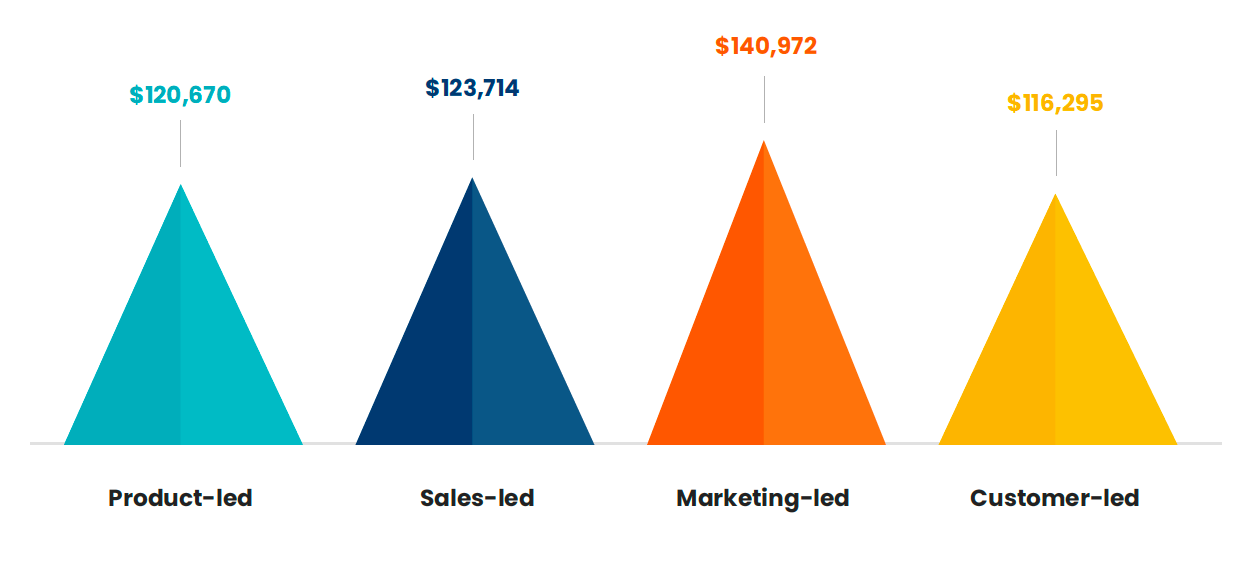
It’s interesting that companies that consider themselves customer-led have the lowest average salaries for their customer marketers despite making up 27.6% of company cultures represented.
It may be the case that these companies are investing more in customer programs, be it events, advocacy rewards, or more, so less budget gets assigned to customer marketing salaries.
Customer centricity relies on consistent communication to answer existing customers’ needs and, as such, customer marketers should be a priority when it comes to delivering a positive experience to said customers.
Other factors affecting Customer Marketing salaries
This was a sneak peek into Customer Marketing Alliance's recent salary report, sponsored by Influitive.
Delve into the deep-cut analysis of the factors currently impacting wage levels, and stay in the know about how much your experience and position are worth.
This report also includes things like:
- A comparison of global locations as well as a breakdown by US states.
- A breakdown of the average salaries for diversity groups including gender, ethnicity, disability, and LGBTQ+.
- Look into your company size, growth stage, employee headcount, and industry, and how this will affect your salary.




